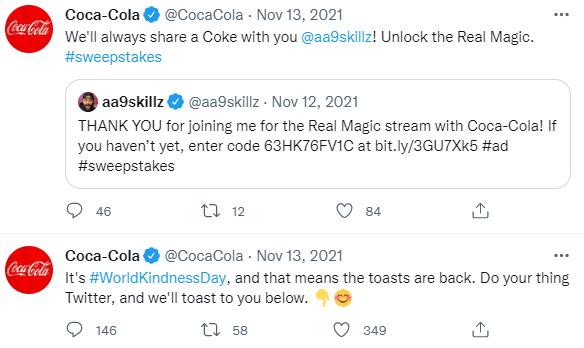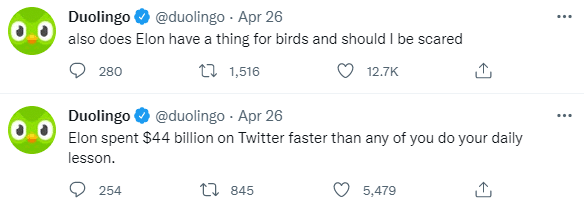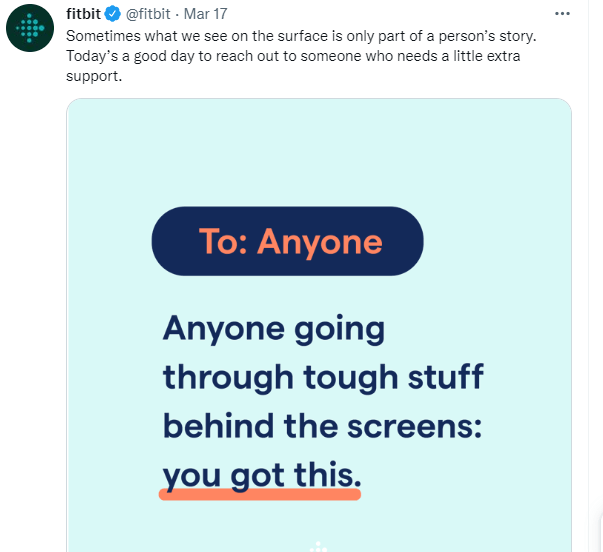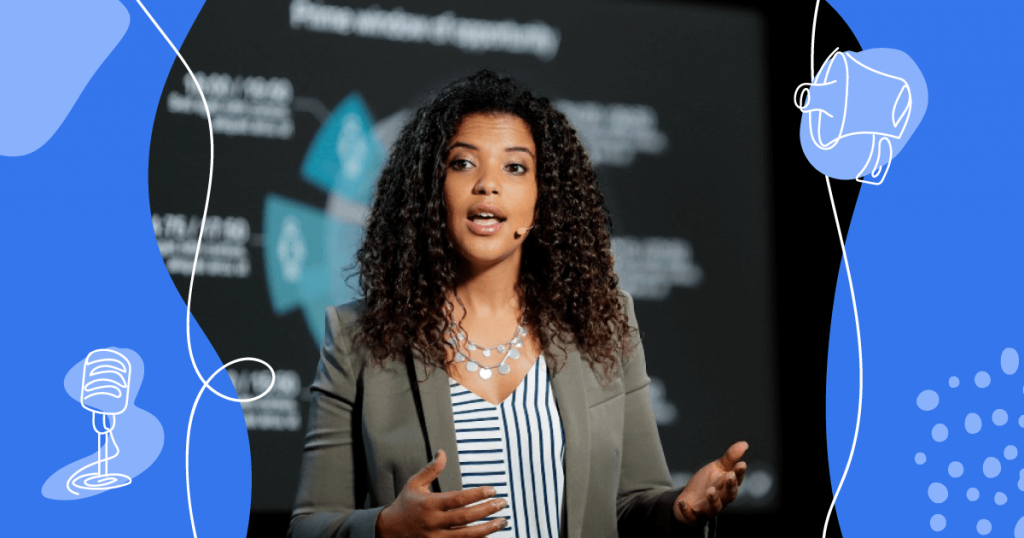One of the goals of branding is to establish a distinct brand voice that sets you apart from competitors.
After all, in today’s competitive marketing landscape, it’s easy to get lost in the noise, potentially costing you business and revenue as customers flock to other companies.
While recognizing the importance of a brand voice, you might be unsure where to start.
Fortunately, numerous brand voice examples from other companies can serve as inspiration for crafting your own.
In this article, we’ll explore some of the best and most effective brand voice examples from top companies, examining how they develop a unique voice that aligns with their messaging.
- What Exactly is Brand Voice?
- Why Does Brand Voice Matter?
- 15 Brand Voice Examples
- 6 Tips for Developing Your Brand’s Voice
- Brand Voice FAQs (Frequently Asked Questions)
- Wrap Up!
What Exactly is Brand Voice?
Brand voice is the obvious and distinct personality your brand takes on in all communications and serves to portray you in a certain way to your customers.
As a defining characteristic of your marketing strategy, it allows you to connect with a specific audience that wants or needs what your company has to offer.
One way to grasp this concept is by comparing it to an individual’s unique personality. Your brand, too, must have a distinct personality and allow consumers to gain a sense of who you are by the way you express yourself and interact with them.
Personalities may be similar, but even one step in a slightly different direction can make you unique and capture the attention of your intended audience, causing them to halt and spend a little more time getting to know you.
It may even entice many who didn’t know about you or have a previous interest in what you offer. If you spark their interest enough, they will want to find out about your products and services, all based on the way you approach your communications.
Why Does Brand Voice Matter?
Brand voice matters because it is what makes you stand out and rise above the ever-increasing noise that consumers find online today.
It makes you identifiable and recognizable on an ongoing basis.
Brand voice can make a lasting impression that wins consumers over, continues to entice already paying customers, and creates a loyal following.
A brand voice might be “powerful and uplifting”, “professional and educational”, or “fun and off-the-cuff”.
Determining what your brand voice is should depend strongly on what type of relationship you want to have with customers.
Once you have your voice determined it is easier to communicate with a team, and third players, such as ghostwriters that can help you a lot to produce your writing pieces.
To help you begin, let’s take a look at 15 brand voice examples that cover a wide variety of personalities.
15 Brand Voice Examples
1. Dove
The beauty and self-care brand Dove is most well known for its uplifting and powerful brand voice that encourages customers to embrace their inner beauty.
The brand voice works to build awareness of body positivity, female empowerment, and self-love.
By creating such a powerful message in the communication Dove has with customers, the brand is able to promote its products and reinforce its values.

2. Mailchimp
Mailchimp, a popular platform for email marketing, has a brand voice that is amusing and informal.
This might seem like it doesn’t fit with their SaaS platform. Still, it actually creates a unique connection to customers and uses off-beat humor and genuine messaging to connect on a personal level to their audiences.
However, Mailchimp also emphasizes that jokes in messaging and communication should come naturally, rather than be forced to happen.

3. Nike
Nike, the sporting goods brand, is perhaps most well known for its effective tagline of “Just Do It”.
The brand voice follows along with that message by being confident and assertive. The communication and messaging from Nike are simple, effective, and to the point.
Rather than obfuscate the point with wordy descriptions, Nike instead uses its efficient messaging and brand voice to encourage audiences to go for their goals and never give up.

4. Starbucks
Coffee giant, Starbucks, uses a functional yet expressive tone in its brand voice that helps to simplify its messaging while expressively telling its story with coffee and helping prepare customers to enjoy what is to come.
This helps to strengthen the connection customers have with the product while still making their copy and communications simple and clear, avoiding any confusion and making it simple for customers to make a purchase.

5. Harley-Davidson
When thinking of brand voice examples, most people would assume the word “aggressive” never really comes up.
However, the motorcycle company Harley-Davidson demonstrates that for the right audience and product, there isn’t any descriptive word that can’t work.
The brand uses a somewhat aggressive and confident brand voice to emphasize the power of the product and challenges audiences to be bold enough to purchase it.
While not for every brand, it works well for Harley-Davidson audiences.

6. Coca-Cola
It’s a major leader in the beverages industry and has had the same brand voice for over a century, making it a great brand voice example of consistency over time.
Coca-Cola has a brand voice that focuses on positivity and friendliness.
Their marketing and messaging are full of examples of happy lives made better with a drink of Coke, which over time has helped to build a strong connection between the product and good times.

7. Tiffany
The luxury jewelry industry giant has a witty and elegant brand voice that emphasizes the classic experience people relate to the brand.
Tiffany uses simple, clear, and concise messaging to get its point across and help cultivate the elegance of the brand.
People who connect with the brand voice are much more willing to pay the prices of Tiffany to connect with that brand voice than other competitors who aren’t as well-known.

8. Spotify
Spotify, a music streaming company, has a brand voice that is funny, direct, and concise.
Rather than taking itself too seriously, Spotify plays up the humor of different playlists, music genres, and new releases.
Spotify uses this brand voice to connect with customers in a casual and friendly manner, helping to build a positive association between the brand and its audiences.

9. Uber
As one of the biggest names in the rideshare industry, Uber’s brand voice is considerate and bold, focusing on the audience while making clear statements.
Uber wants to address the customer directly, asking where they are going and encouraging them to order a ride while still making their copy and communications easy to understand and compelling across different areas and languages.

10. Slack
In contrast, Slack, the workplace communication tool, has a very neutral, direct, and straightforward brand voice.
Rather than trying to play up humor or create witty anecdotes, Slack uses its direct brand voice to help remind customers of the value of efficiency and work, which helps to promote the value of the tool itself.
By keeping their communication simple and avoiding distractions, Slack emphasizes why its product is important in the workplace.

11. Old Spice
This men’s deodorant company has one of the more recognizable brand voices by design.
Old Spice was rebranded in 2010 once it started to get more competition. Its brand voice is both masculine and humorous, often exaggerating masculinity to have a humorous effect.
This combination, along with clever video marketing, helped to make the brand stand out and become a household name once again.

12. Duolingo
Duolingo is a language-learning app, but you might not know that from the brand voice.
It has a wacky and out-of-pocket brand voice that embraces the antics of its green owl mascot, Duo.
Ever since the owl became a meme for the somewhat aggressive reminders that the app sends, the brand has embraced that. It typically uses darkly humorous threats and antics to play up the humor of the situation and create a truly unique brand voice.

13. Skittles
Skittles is one of the best brand voice examples that takes humor and irreverence to another level.
The candy company is incredibly clever and original, often using social media to post funny polls, mischievous behind-the-scenes pleas, and other examples of fresh and exciting content that plays up the fun elements of the product.
Skittles will often post directly about their main competitor, M&Ms, and find ways to make the rivalry fun.

14. Fitbit
Fitbit is a health brand known for its smartwatches and health-tracking tools.
The brand voice of Fitbit is encouraging and inspirational, helping to uplift customers and encourage them to live healthier lives.
Rather than being in-your-face and bold like many health and wellness companies, Fitbit instead uses its brand voice to appeal to audiences regardless of ability and helps encourage them to try new things while supporting them with messages of comfort.

15. HubSpot
HubSpot is a marketing, sales, and service software company that has an optimistic and positive brand voice.
They encourage their customers to improve their business with a brand voice that encourages growth and hope.
By pushing the message that improvement is possible, they create a strong association between their brand and the products that they offer to customers.

6 Tips for Developing Your Brand’s Voice
You may already have some ideas of what your brand’s voice should be or be starting from scratch. Wherever you are, here are 6 tips for developing your brand’s voice.
1. Review your company’s mission, values, and goals
Everything about your brand needs to be interconnected and consistent. For this reason, start reviewing your company’s mission, values, and goals.
These three serve as the foundation of your business and are the starting points for everything you do as a brand. Gain a solid understanding of them, and keep them in mind as you move forward.
Now take a look at your existing content.
What image are you projecting with your current website, social media profiles, posts, email communications, and more? Are they consistent and match your company’s goals, missions, and values, or do they all sound different?
Which ones resonate with your consumers while still being a true representation of your brand?
2. Identify keywords and phrases that describe your brand
Find a few descriptive words that relate to your brand and can be springboards for your brand voice.
To help with this, identify keywords and phrases in your company’s mission statement, values, and goals that can serve the dual purpose of defining a personality trait for your brand.
For example, if your brand is eco-conscious, identify other words and phrases that can bolster that characteristic and incorporate them into your communications.
Also, look at the characteristics and descriptions of your products or services for clues of what brand voice to create. If you offer an all-inclusive solution to a particular issue or customer pain point, you can take a few different approaches.
For example, you may want to focus on how your product makes life easier, allowing consumers to spend more time with their families.
Another approach is to focus on direct, convincing communications that include statistics and research-backed proof to show the effectiveness of your solution and brand.
Many times, the keywords you identify will point you in the direction of where you want your brand voice to go.
Examples of descriptive keywords to build your brand voice around include:
- Eco-conscious
- Forward-thinking
- Classic
- Modern
- Traditional
- Authentic
- Down to earth
- Educational
Words and phrases can capture the essence of your brand, and you can use these to build your brand voice and strategy.
3. Identify your audience and build better buyer personas
To help you find the right voice for your brand, you need to know who you are trying to reach with your content.
The reason why knowing your audience is so important is to cater your communications to speak directly to them. This helps create a connection to your product, service, or company. From there, purchasing from you and staying loyal to your brand becomes a bigger possibility.
Start by getting to know your already existing audience by utilizing analytics software. Next, reach out to customers with a survey or questionnaire to find out such things as career choices, hobbies, interests, favorite publications, entertainment preferences, social media platforms, and more. Spend some time social listening to understand how your audience speaks online.
Another way to tune into your audience is to examine your best-performing content. What characteristics does each include? Is it humorous, empathetic, straightforward, or academic?
Based on your learning, create one or more buyer personas and refer to these as you consider your brand voice.
You can build your buyer personas quickly with WriterAccess’ Buyer Persona Builder. Find out more in our free trial!
4. Determine what tone best fits your brand
The tone is all about how you say something. It is about adding emotion to your messaging.
To get started, answer this question: What kind of relationship do you want to develop with customers?
Do you want to appear proper and authoritative, or be right there in the middle of the problem with them?
Suppose you have a simple solution to a common problem consumers experience. You can position yourself as the serious solution so they can get back to their family, career, or other passion.
Another option is to inject some humor, highlighting fun phrases and activities that can inspire and create enthusiasm and connection.
Examples of the tone of voice for your content include:
- Informal
- Casual
- Friendly
- Positive
- Uplifting
- Encouraging
- Amusing, fun, or witty
- Inspiring
- Humble
- Helpful
- Straightforward or Direct
- Confident
- Assertive
- Formal or elegant
- Authoritative
- Bold
5. Analyze the competition and find ways to differentiate your brand
While your company’s identity is unique and shaped by its mission and objectives, analyzing your competitors can help refine your brand voice.
Therefore, consider their projected and perceived personality through their content and communications.
Identify their target audience and compare it with yours. Are they reaching the same demographic you aim to attract? Explore consumer reviews and social media discussions to gain insights.
Evaluate if there are more effective ways to connect and communicate with your audience. For instance, if competitors are criticized for being condescending, position your brand as approachable and helpful.
Even if your brand personality resembles a competitor’s, it’s crucial to differentiate your voice to stand out and leave a lasting impression.
6. Create and share branding guidelines and style guide
You want your brand voice to be uniform and consistent across all content types and platforms, from webpages to emails to social media posts.
To ensure consistency across all your marketing efforts, it is essential to document your brand voice and share it with all the right people.
Start by creating brand guidelines and a style guide as a reference for anyone who produces content for your brand.
Include the following:
- Personality traits and tone for the brand (funny, helpful, confident, formal, etc.)
- Common keywords and phrases
- Examples
Provide the guides to your in-house marketing, customer service, and sales teams and also to any outsourced talent, including freelance writers and graphic designers.
Brand Voice FAQs (Frequently Asked Questions)
What is the voice of brands?
The voice of brands refers to the unique personality, tone, and style that a brand uses to communicate with its audience. It encompasses the language, vocabulary, and manner in which a brand conveys its messages, whether through written content, visuals, or verbal communication.
What are the 3 C’s of brand voice?
The 3 C’s of brand voice are Consistency, Clarity, and Character.
Consistency: Refers to maintaining a uniform tone and messaging across all communication channels to reinforce brand identity.
Clarity: Involves ensuring that the brand’s message is easily understandable and resonates with the target audience.
Character: Reflects the distinct personality and values of the brand, helping to create emotional connections with customers.
What is Disney’s brand voice?
Disney’s brand voice is characterized by magic, wonder, and imagination. It embodies a sense of nostalgia, happiness, and enchantment, aiming to evoke the inner child in everyone. Disney’s communication style is typically warm, friendly, and optimistic, focused on storytelling and creating memorable experiences. The brand often uses a playful tone, colorful imagery, and whimsical language to engage audiences of all ages. Overall, Disney’s brand voice is timeless, aspirational, and deeply rooted in its rich heritage of storytelling and creativity.
Wrap Up!
Having a memorable logo is a great start, but your brand voice makes you identifiable and recognizable on an ongoing basis.
And, with so many different directions you can take, there will always be brand voice examples that can help inspire you to find the voice that works best for your brand.
If you need help creating unforgettable experiences for your audience through content, WriterAccess is the right choice.
Our content creation platform seamlessly blends the efficiency of AI-powered tools with the creativity of human writers, enabling you to streamline your content production and fortify your brand identity.
Experience the power of our platform with a complimentary 14-day trial. Sign up now and unlock its full potential!









